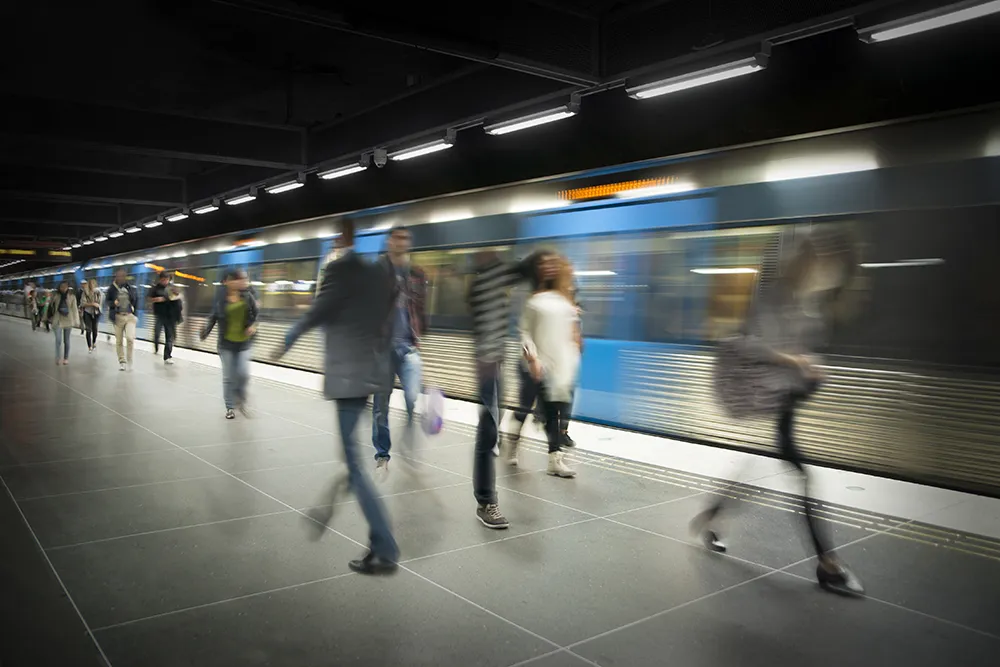Australian facial tracking systems developer Seeing Machines has teamed up with European coach and tour operator Royal Beuk, in a deal that will see the deployment of automated fatigue monitoring systems to ensure driver alertness and safeguard coach passengers.
The Seeing Machines fatigue monitoring system is based on patented eye-tracking technology that can detect if a driver is distracted or falling asleep at the wheel. Using sensing equipment that requires no re-calibration between different drive
December 11, 2013
Read time: 2 mins
Australian facial tracking systems developer Seeing Machines has teamed up with European coach and tour operator Royal Beuk, in a deal that will see the deployment of automated fatigue monitoring systems to ensure driver alertness and safeguard coach passengers.
The Seeing Machines fatigue monitoring system is based on patented eye-tracking technology that can detect if a driver is distracted or falling asleep at the wheel. Using sensing equipment that requires no re-calibration between different drivers, the system tracks head alignment for potential distraction of the driver while simultaneously tracking and analysing eye behaviour to detect micro sleeps. This enables warnings to be given through in-cab alerts, or for alerts to be provided to operations management for direct intervention.
In a nine-month trial, Royal Beuk will install the systems in an initial twenty of its fleet of coaches, with plans to expand use of the technology across its entire fleet of 60 coaches on successful completion of the trial.
Results of the evaluation will be used for the further development and enhancement of the system for use in cars as well as coaches and trucks. Royal Beuk will then also act as lead European distributor of the systems for coach and truck fleets across Europe.
“Although coach transportation is statistically proven to be the safest way of travelling, there is always a risk,” says Marc Beuk, research and development manager of Royal Beuk. “Driver fatigue is something that we can protect against to an extent through training and good working practices, but “risk never sleeps”. The use of the Fatigue Monitoring Systems on our and other coaches is about eliminating that risk.”
“Eye tracking technology has a major part to play in keeping drivers and passengers safe on the roads,” said Ken Kroeger, CEO of Seeing Machines. “The technology has already been proven in extreme environments such as open cut mines and now promises to bring the same benefits to public roads.”
The Seeing Machines fatigue monitoring system is based on patented eye-tracking technology that can detect if a driver is distracted or falling asleep at the wheel. Using sensing equipment that requires no re-calibration between different drivers, the system tracks head alignment for potential distraction of the driver while simultaneously tracking and analysing eye behaviour to detect micro sleeps. This enables warnings to be given through in-cab alerts, or for alerts to be provided to operations management for direct intervention.
In a nine-month trial, Royal Beuk will install the systems in an initial twenty of its fleet of coaches, with plans to expand use of the technology across its entire fleet of 60 coaches on successful completion of the trial.
Results of the evaluation will be used for the further development and enhancement of the system for use in cars as well as coaches and trucks. Royal Beuk will then also act as lead European distributor of the systems for coach and truck fleets across Europe.
“Although coach transportation is statistically proven to be the safest way of travelling, there is always a risk,” says Marc Beuk, research and development manager of Royal Beuk. “Driver fatigue is something that we can protect against to an extent through training and good working practices, but “risk never sleeps”. The use of the Fatigue Monitoring Systems on our and other coaches is about eliminating that risk.”
“Eye tracking technology has a major part to play in keeping drivers and passengers safe on the roads,” said Ken Kroeger, CEO of Seeing Machines. “The technology has already been proven in extreme environments such as open cut mines and now promises to bring the same benefits to public roads.”









